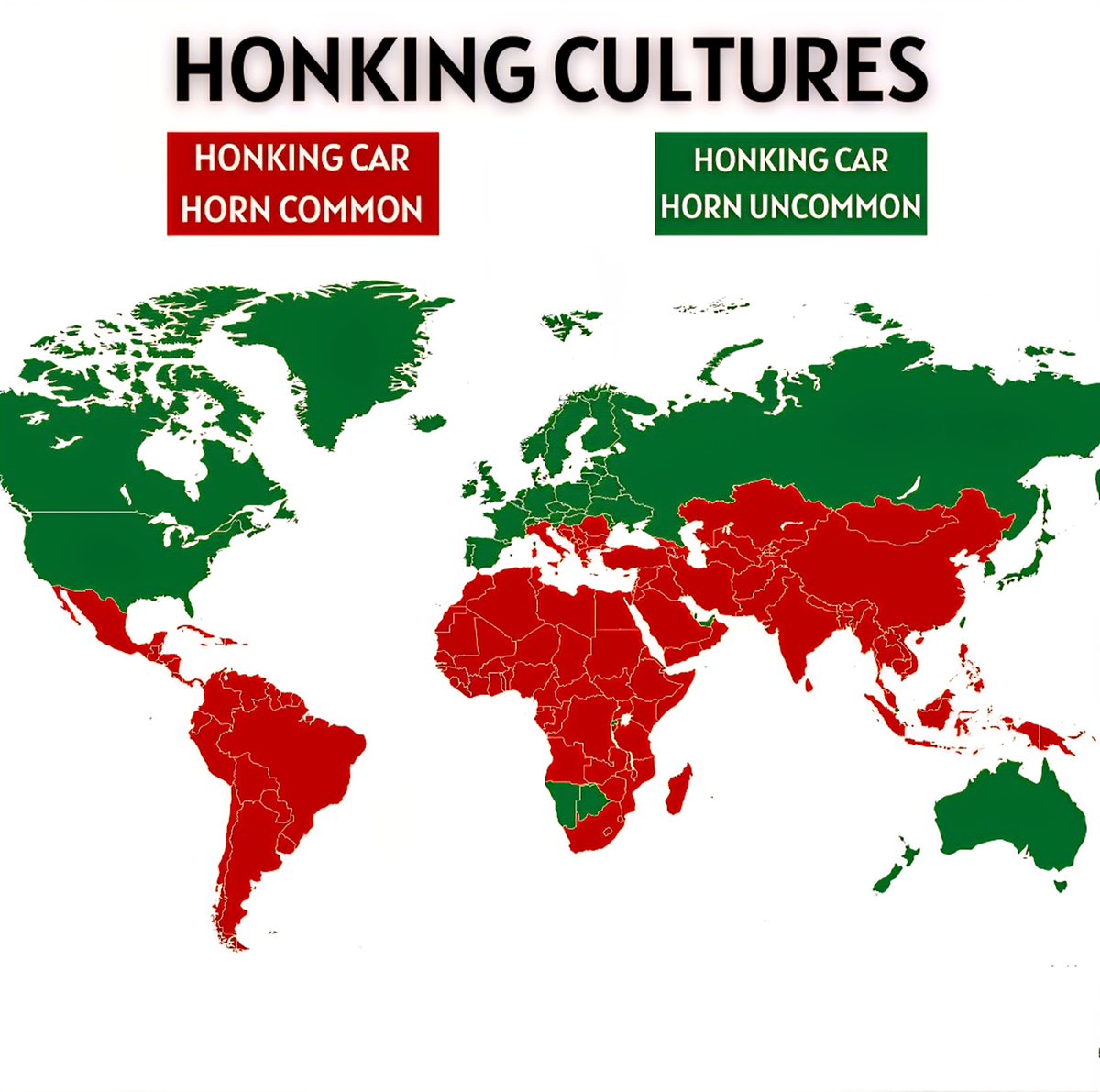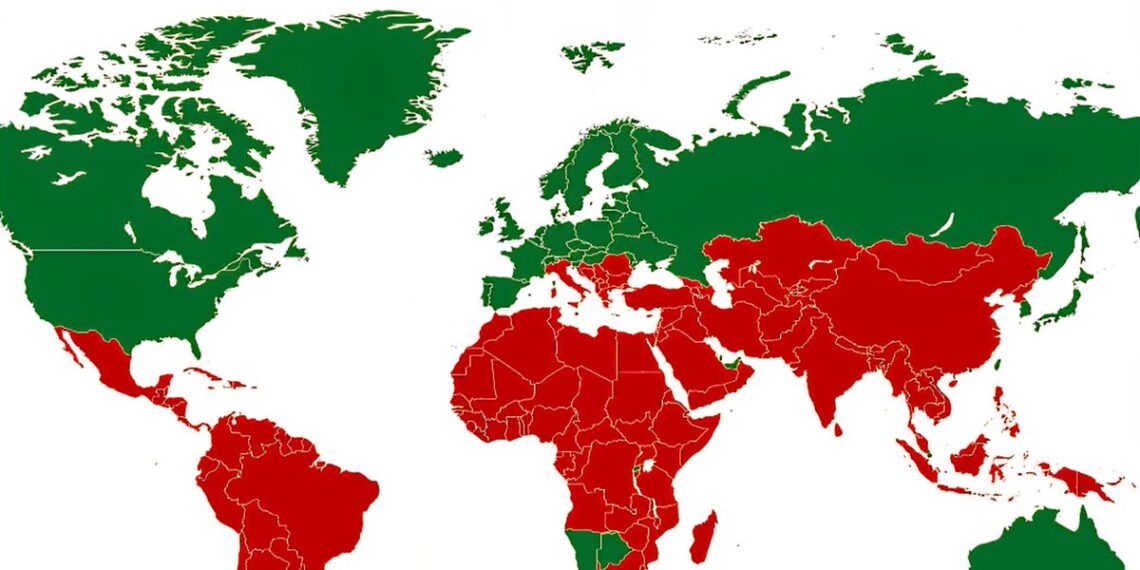Select Language:
Honking Culture Around the World 🔊
1. The United States: The Sound of Urgency
In the United States, honking predominantly signals urgency or frustration. Drivers often use their honks to alert others of their presence, especially in busy urban areas like New York City or Los Angeles. The cultural norm suggests that a quick honk is a polite way to alert someone or signal displeasure, but excessive honking is generally frowned upon and may be considered aggressive. During rush hours or traffic jams, it’s not unusual to hear a chorus of honks filled with impatience, reflecting the high-paced lifestyle of Americans.
2. India: Expressing a Melodic Meltdown
India’s honking culture is among the loudest and most pervasive worldwide. On crowded streets from Delhi to Mumbai, horns become a symphony of chaos. Drivers honk to warn others, celebrate, or even express annoyance. This frequent use of honks has become a cultural signature and is often humorously linked to the country’s congested traffic conditions. Despite ongoing efforts by authorities to curb noise pollution, honking remains an integral part of Indian driving culture, symbolizing both communication and chaos.
3. Japan: The Subtle Sound of Respect
In Japan, honking is rare and usually subdued. It’s typically reserved for emergencies or urgent warnings and is considered a sign of disrespect if used improperly. Instead, Japanese drivers rely heavily on signals, politeness, and calm behavior. The country’s strict traffic regulations highlight the importance of discipline, with honking being a last resort rather than a routine or casual occurrence. This restrained approach contributes to Japan’s reputation for orderly roads and respectful drivers.
4. European Countries: A Mix of Tradition and Caution
Across Europe, honking habits vary significantly. In cities like Rome or Paris, horns are used to navigate narrow streets and crowded intersections. Yet, many countries implement strict bans on unnecessary honking—often during nighttime or in quiet residential areas—to reduce noise pollution. For example, in France and Germany, drivers are encouraged to use lights and gestures instead of horns whenever possible. The cultural emphasis is on maintaining the harmony of urban life while still leaving space for necessary communication.
5. The Middle East: Horns as a Cultural Language
In Middle Eastern countries such as Egypt and Lebanon, honking is an expressive form of communication. It’s used not only for warnings but also to greet friends, signal allegiance during traffic chaos, or even during celebrations. The horns often serve as an auditory extension of social interactions in busy city streets. Despite efforts by local authorities to control noise levels, honking remains an essential element of daily life for many drivers, reflecting a lively and expressive driving culture.
6. South Africa: From Caution to Celebration
South Africa’s honking culture reflects the country’s diverse and vibrant social fabric. Drivers may honk to alert others of their presence or to make way in congested traffic. However, the sound often shifts from cautious to celebratory—such as during sports events or festivals—where horns join in as a form of communal expression. The local approach balances safety and social connection, even in the midst of urban stress.
7. Australia and New Zealand: Politeness with Limits
In Australia and New Zealand, honking is generally reserved for warnings or emergencies. Drivers tend to avoid unnecessary honking, preferring to use indicators and gestures to communicate. Excessive honking might be seen as impolite or aggressive, and law enforcement actively discourages noise pollution. Respect for quiet neighborhoods and orderly roads underscores the cultural emphasis on civility and considerate driving habits.
8. Latin America: The Rhythmic Horns
In many Latin American countries like Brazil, Argentina, and Mexico, honking is a lively and integral part of urban life. It’s used to navigate bustling streets, signal intentions, or even express excitement or frustration. Street scenes often feature a rhythmic honking pattern, almost like a regional language of sorts. This expressive use of horns symbolizes the energetic spirit of Latin communities, where traffic jams are almost seen as social events.
9. China: From Caution to Commercial Communication
China’s honking culture has seen a transformation over recent years. While traditionally used sparingly, rapid urban growth has led to an increase in the habitual use of horns in cities like Beijing and Shanghai. For drivers, horns serve multiple purposes—from caution to signaling intentions. Authorities have started implementing noise regulation policies, but cultural familiarity with honking remains deeply ingrained in the busy Chinese metropolis.
10. The Future of Honking: Toward Mindful Soundscapes
Across the globe, efforts are ongoing to promote quieter, more respectful driving cultures. With advancements in autonomous vehicles and smart traffic management systems, the reliance on honking is expected to diminish in the coming decades. Many cities now encourage the use of technology over horns to reduce noise pollution, aiming for urban environments that balance safety, communication, and tranquility.







